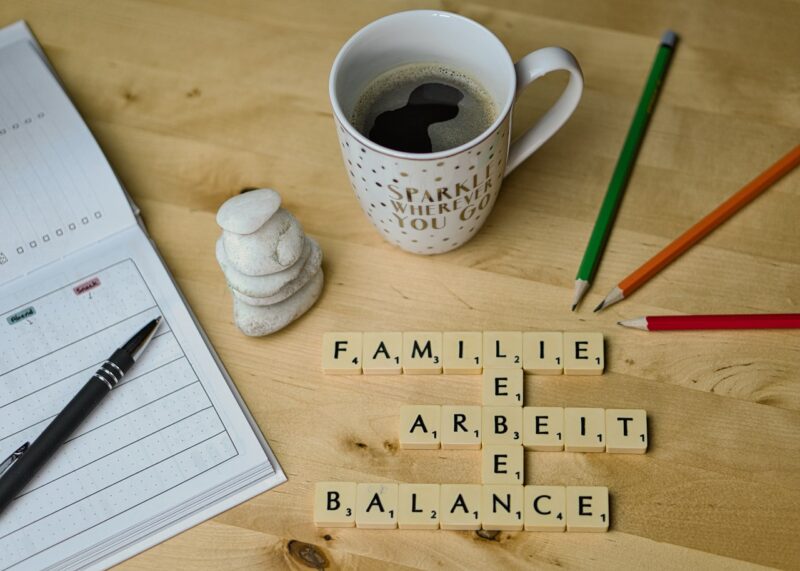Live Life Well: Embracing the Art of Work-Life Balance in a Busy World
November 18, 2024

In our fast-paced, modern world, achieving a work-life balance has become more challenging than ever. Many individuals find themselves caught in the perpetual cycle of work demands and personal commitments, often leading to burnout, stress, and a decline in overall well-being. In this article, we will explore the art of work-life balance, discuss its importance, and provide practical strategies that anyone can implement to create a more harmonious life.
1. Understanding Work-Life Balance
Work-life balance refers to the equilibrium between the time and effort you devote to your work and your personal life. It is not about achieving a perfect 50/50 split, but rather finding a sustainable approach that allows you to thrive in both areas. Work-life balance encompasses a variety of aspects, including:
– Personal fulfillment
– Professional success
– Health and well-being
– Family and social connections
Recognizing the need for balance is the first step toward leading a fulfilling life. Striking this balance allows you to recharge, maintain healthy relationships, and achieve your professional aspirations without sacrificing your mental and physical health.
2. The Importance of Work-Life Balance
The significance of work-life balance cannot be overstated. Here are several compelling reasons why it should be a priority for everyone:
- 1. Improved Mental Health: Maintaining balance can help reduce stress, anxiety, and depression. When you prioritize self-care and personal time, you nurture your mental well-being.
- 2. Enhanced Productivity: Ironically, working too much can lead to burnout, which negatively impacts your productivity. By fostering a balance, you can work more efficiently and produce higher-quality results.
- 3. Stronger Relationships: A well-balanced life allows you to invest time in your relationships, fostering deeper connections with family and friends.
- 4. Better Physical Health: Incorporating physical activity and leisure into your daily routine can lead to improved physical health. Work-life balance encourages you to take care of your body and overall wellness.
- 5. Greater Life Satisfaction: Ultimately, individuals who achieve a good work-life balance tend to report higher levels of happiness and life satisfaction.
Achieving work-life balance is not only beneficial for individuals but also plays a significant role in enhancing workplace morale and overall productivity of an organization.
3. Practical Strategies for Achieving Work-Life Balance
Here are some practical strategies to help you embrace the art of work-life balance:
3.1 Set Clear Boundaries
Establish clear work hours and communicate them with your employer, co-workers, and family. Avoid work-related tasks outside of set hours to create a distinction between work and personal life.
3.2 Prioritize Time Management
Take advantage of time management tools and techniques, such as:
- Time blocking: Allocate specific blocks of time for work, hobbies, and personal activities.
- The Pomodoro Technique: Work for 25 minutes, then take a 5-minute break to enhance focus and productivity.
- To-Do Lists: Create daily lists of priorities, ensuring that personal tasks receive equal attention to work tasks.
3.3 Practice Self-Care
Allocate time for activities that bring you joy and relaxation, such as exercise, meditation, hobbies, or spending time with loved ones. Regular self-care enhances your overall well-being and equips you to handle work demands more effectively.
3.4 Utilize Technology Wisely
While technology can blur the lines between work and life, it can also assist in maintaining balance. Use apps to track your time, schedule, and commitments effectively. Leverage technology to enhance communication without it becoming overwhelming.
3.5 Learn to Say No
Recognize your limitations and avoid overcommitting—both in your work and personal life. Saying no frees up time for essential tasks and activities that truly matter to you.
3.6 Build a Support Network
Surround yourself with supportive colleagues, friends, and family members. Building a strong support network can provide you with guidance during stressful times and reminders of the importance of balance.
4. Addressing Workplace Culture
Changes in work-life balance cannot solely be an individual endeavor; organizations must also foster a culture that promotes balance. Here are ways organizations can support their employees:
- Flexible Work Options: Offering remote work, flexible hours, or compressed workweeks can enable employees to better manage their work-life balance.
- Encouraging Breaks: Promote taking regular breaks and using vacation time to recharge and avoid burnout.
- Mental Health Resources: Providing access to mental health support, workshops, and resources that emphasize the importance of well-being can lead to a more balanced workforce.
When organizations prioritize work-life balance, they witness increased productivity, job satisfaction, and employee retention.
5. Conclusion
Achieving work-life balance is an ongoing journey that requires conscious effort and commitment. By implementing practical strategies, setting boundaries, and fostering a supportive environment, both individuals and organizations can work towards a more balanced lifestyle. In this busy world, it is essential to remember that work is just a part of life—not the entirety of it. Embrace the art of work-life balance and prioritize your well-being today. Your mental, physical, and emotional health will thank you for it.
As you embark on this journey, remember that balance looks different for everyone. Adjust your approach as needed, and embrace each step you take towards living life well.






